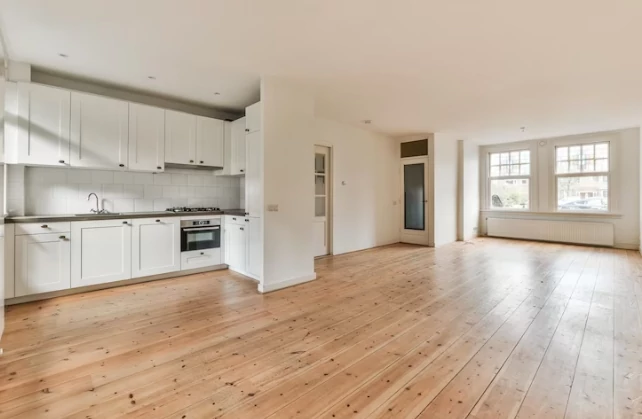Hardwood floors are a popular choice for homeowners due to their durability, aesthetics, and timeless appeal. However, with any investment comes the responsibility of maintenance. While hardwood floors can last for decades if properly cared for, neglecting them can lead to costly repairs and replacements.
Therefore, it is important to understand whether there are any special maintenance requirements for hardwood floors. As the saying goes, “An ounce of prevention is worth a pound of cure.” Taking proactive steps toward maintaining your hardwood floors can help you avoid unnecessary expenses in the long run.
This article will delve into the different aspects of maintaining hardwood floors including regular cleaning routines, protective measures to consider, and when it may be necessary to seek professional assistance. By following these guidelines, you will be able to keep your hardwood floors looking beautiful and durable for years to come.
Regular Cleaning and Maintenance
Regular cleaning and maintenance of hardwood floors is essential to ensure their longevity. Sweeping or vacuuming daily will help prevent dirt, dust, and other debris from accumulating on the surface. This can cause scratches and wear over time, which can be detrimental to the beauty of your hardwood floors.
For deeper cleaning, it’s recommended to use a damp mop with a gentle cleaner specifically designed for hardwood floors. Avoid using harsh chemicals or abrasive materials that could damage the finish.
It’s also important to wipe up any spills immediately as moisture can seep into the wood causing warping or buckling. By following these simple steps regularly, you can maintain the natural beauty of your hardwood floors for years to come.
## Protecting Your Hardwood Floors
To preserve the natural beauty and durability of your hardwood flooring, it is essential to implement protective measures against daily wear and tear.
One of the most important steps in protecting your hardwood floors is to use floor mats at all entrances to your home or room. These mats will help trap dirt, grit, and moisture that would otherwise be tracked onto your floors, causing scratches and damage.
Additionally, avoid wearing high heels on hardwood floors as they can cause dents and scratches. Another way to protect your hardwood floors is by using furniture pads on the legs of chairs, tables, and other heavy objects that are frequently moved across the floor.
This will prevent scratches and scuffs caused by friction between the furniture legs and the floor surface. Furthermore, avoid dragging heavy furniture across your hardwood floors as this can also cause deep scratches or even gouges.
By implementing these simple protective measures for your hardwood floors, you can ensure their longevity while maintaining their natural beauty for years to come.
Professional Maintenance and Restoration
Professional maintenance and restoration are essential for maintaining the longevity and beauty of hardwood floors. Refinishing and sanding can be done to remove deep scratches, stains, or dents on the surface.
Recoating is necessary to protect the floor from wear and tear, while repairing damaged planks ensures a seamless appearance.
Seeking professional help for any damage or wear and tear is highly recommended to ensure proper care of your hardwood floors.
Refinishing and Sanding
The process of refinishing and sanding hardwood floors involves several steps to bring back the original luster and beauty of the wood.
The first step is to remove any existing finish using a chemical stripper or sandpaper.
This process requires careful attention since removing too much of the existing finish can damage the surface of the wood.
Once all traces of old finish have been removed, any imperfections in the wood are smoothed out using an orbital sander or a belt sander.
After smoothing out any dents, scratches, or stains on the surface, it’s time to apply a new coat of finish.
The type of finish used depends on personal preference and budget constraints but there are two main types: water-based and oil-based finishes.
Water-based finishes are eco-friendly but require more coats for durability while oil-based finishes tend to be more durable but emit unpleasant fumes during application.
In conclusion, refinishing and sanding hardwood floors is not only necessary for maintaining their appearance but also helps in extending their lifespan.
It’s important to hire professionals with experience in this field since they possess knowledge about different kinds of wood species and can suggest appropriate methods for refinishing depending on individual needs.
Recoating and Repairing
Recoating and repairing are essential steps in maintaining the longevity and appearance of wooden flooring. Recoating involves applying a new layer of finish to the floor, which helps to protect it from scratches, stains, and other forms of damage.
It is especially important in high traffic areas where the finish can wear down quickly. The process typically involves lightly sanding the surface to remove any debris or imperfections before applying a new coat of finish.
Repairing hardwood floors requires attention to detail and skill. Small nicks and scratches can often be fixed with a simple touch-up kit that matches the color of your wood flooring. However, larger damages such as cracks or deep gouges may require professional repairs by an experienced contractor.
It is important to address these issues promptly as they can lead to further damage if left untreated over time. Overall, regular recoating and prompt repairs are necessary for preserving the beauty and value of hardwood floors for years to come.
Seeking Professional Help for Damage or Wear and Tear
After recoating and repairing your hardwood floors, it’s important to monitor their condition and seek professional help if you notice any signs of damage or wear and tear.
Even with proper maintenance, hardwood floors can experience issues such as scratches, dents, and stains over time. These problems can be caused by a variety of factors including heavy foot traffic, pets, furniture movement, spills, and more.
If you notice any significant damage or wear on your hardwood floors that cannot be easily repaired through DIY methods like sanding or buffing, it’s best to seek professional help. A flooring specialist can assess the extent of the damage and recommend the best course of action for repair or replacement.
They may suggest options such as wood floor restoration or refinishing to restore your floors to their original beauty. Seeking professional help not only ensures that your floors are properly maintained but also helps prevent further damage that could lead to costly repairs down the line.
Frequently Asked Questions
How often should I refinish my hardwood floors?
Hardwood floors should be refinished every 7-10 years, or when there are visible signs of wear. Refinishing involves sanding down the top layer and applying a new finish. Regular maintenance, such as sweeping and avoiding excess moisture, can extend the lifespan between refinishing.
Can I use a steam mop on my hardwood floors?
According to a study by the National Wood Flooring Association, steam mops can cause damage to hardwood floors. Instead, use a damp mop with a pH-neutral cleaner and avoid excessive water. Regular maintenance includes sweeping, vacuuming, and using protective pads on furniture.
What should I do if my hardwood floors become discolored or stained?
Discolored or stained hardwood floors can be remedied by sanding and refinishing the affected area. Prevention measures include promptly wiping up spills, placing mats at entrances, and avoiding direct sunlight exposure. Regular cleaning with recommended products is also crucial for maintaining the floor’s appearance.
Is it normal for hardwood floors to squeak and creak?
Squeaking and creaking are common issues with hardwood floors, caused by various factors such as humidity changes or improper installation. Regular maintenance, including tightening loose boards or adding lubrication, can help reduce these noises and prolong the floor’s lifespan.
How long do hardwood floors typically last before needing to be replaced?
Hardwood floors can last for decades with proper maintenance and care. The lifespan depends on factors such as the wood species, installation methods, and foot traffic. Regular cleaning, refinishing, and repairing can extend their durability.
Conclusion
Maintaining hardwood floors can be a daunting task, but it is not an impossible feat. It requires regular cleaning and maintenance, as well as protecting the floors from wear and tear.
Regular sweeping, vacuuming, and mopping are crucial in keeping the floor clean and free from debris that can cause scratches or damage. Furthermore, using furniture pads to prevent scratches caused by moving furniture is also important.
Additionally, avoiding wet mopping or using harsh chemicals that can damage the finish of the hardwood floors is necessary. Professional maintenance and restoration should also be considered for the long-term upkeep of your hardwood floors.
In conclusion, maintaining hardwood floors may seem like a tedious chore, but with proper care, it can last for generations. A little bit of effort will go a long way in preserving its beauty and durability. So next time you walk on your pristine hardwood floor, remember to treat it with the respect it deserves – after all, it’s not just any ordinary flooring material!



